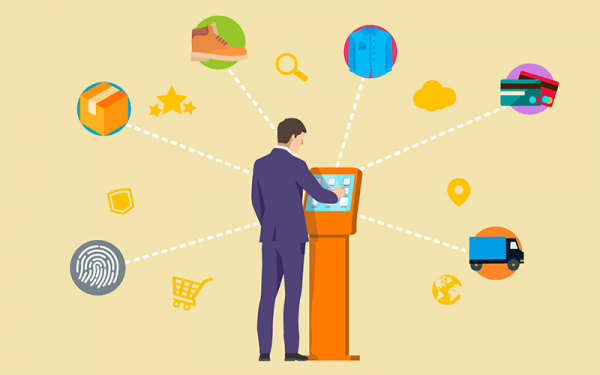In our last blog, we set out the basic premise that touchscreens are a great tool for boosting in-store customer experience, or CX.
Originating in the world of eCommerce, CX is a modern take on an old idea – if you make customers happy and give them what they want, they will buy more.
In truth, retail, hospitality and leisure venues have always focused on delivering a good customer experience, whether it is the way stores lay out their merchandise and use interior design to create positive vibes, or wafting smells of fresh coffee and baked products across a venue to make people feel hungry.
The point with CX is, having originated in the digital realm, online brands are now very interested in the use of technology to map out, create and monitor the ideal customer journey. That has now percolated into in-store commerce too, and the touchscreen is one of the primary tools businesses have for shaping and managing CX.
Picking up where we left off, here are some more ideas for how touchscreens can boost your in-store CX.
Aligning online and offline experiences
In our last article, we talked about using customer touchscreens to provide self-service options to appeal to more independently-minded consumers. Another benefit of touchscreen self-service is that it helps to align the customer’s online and offline experience ─ a growing demand of modern omnichannel shoppers.
When browsing or shopping online, customers expect to be able to look up information about a product at the click of a button, compare prices with other outlets or read reviews. It is well known that many shoppers now carry this over when they visit a store, making comparisons and looking up reviews on their smartphones as they shop.
By providing kiosks with internet-connected touchscreens in store, brands can take greater ownership of this process. The company website can be used as the home page, with access to the same product lists, help and information pages, and user reviews as customers would see if they were shopping online.
Ultimately, this kind of consistency across channels will create a more streamlined, cohesive experience for your customers that will improve perceptions of your brand.
Offer innovative payment options
As things stand in the world of POS technology, the primary use of touchscreens in retail outlets and hospitality venues is as an interface for processing orders, purchases and payments.
This will always be an essential function in customer-facing businesses. In fact, through touchscreen technology, stores have the opportunity to improve how orders and payments are handled in line with optimizing the customer experience.
For one, with touchscreens there is no need for all the work to be done by staff. We have already said customers like self-service options, and this applies to processing sales, too. As time goes on, we will see the self-service terminals already well established in supermarkets roll out across retail and hospitality, offering flexibility and choice to consumers.
Speaking of choice, touchscreens also offer more flexibility in how and where payments are taken. Cosmetics chain Lush has already replaced fixed POS terminals with mobile tablets used by sales associates. When a customer wants to make a purchase, it can be processed there and then, avoiding the traditional check out line.
With the range of options in contactless payments increasing all the time, this kind of approach will only become more and more common. As use of mobile wallets in place of cards becomes increasingly popular, payments will be processed by touching a smartphone to an in-store device using NFC technology.
And who knows, further down the line consumers may not need to carry a smartphone or a card at all – we are not be too far away from a world where payments can be automated using biometrics – fingerprint or handprint recognition on a touchscreen.




